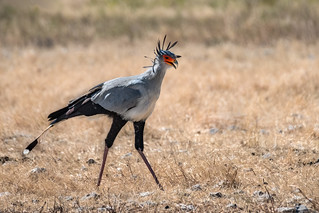[Urban Planning] Burning Bridges
It is now time for my first Action Project of the new term! This is for my new STEAM class, Urban Planning. The first unit in Urban Planning is called “Load”. Because of this, we have been taking a deep dive into bridges and how they are able to span long distances and hold thousands of pounds. We learned about all of the different kinds of bridges, from suspension to arch to truss to beam–we know all about bridges. We have also been learning about tension and compression, how that affects bridges and how they are able to resist these forces. We talked a lot about triangles, how they resist tension and compression, how to calculate the components, and how to tell if they are congruent! For this Action Project, we have been tasked with creating a truss bridge out of 75 popsicle sticks and Elmer’s glue that can hold up to ten pounds. Additionally, R.B.L. and I have decided to attempt to create the longest bridge in the class. Here is our project!


Holding the Weight, 2023, LAH
While researching how to make our bridge, I came across an experiment from Murray State University. This study explored some of the simple types of truss bridges and outlined their strengths and weaknesses. It was reading this experiment that led me to choose a Pratt truss bridge for our design.
We made a sketch of our bridge, highlighting the tension and compression. It was to scale, with a scale of 6in:1in:
Here is another visualization of our bridge, made to scale in GeoGebra:
Finally, here is a picture of our final bridge, with the parts labeled:
.png)
While researching how to make our bridge, I came across an experiment from Murray State University. This study explored some of the simple types of truss bridges and outlined their strengths and weaknesses. It was reading this experiment that led me to choose a Pratt truss bridge for our design.
Fig. 3 Forces in Pratt bridge with load in position 3, 2016, Murray State University
We made a sketch of our bridge, highlighting the tension and compression. It was to scale, with a scale of 6in:1in:
Compression/Tension, LAH, 2023
Digital Blueprint, LAH, 2023
Finally, here is a picture of our final bridge, with the parts labeled:
.png)
Final Photo, 2023, LAH
Calculations, 2023, RBL
Above is the calculations for our bridge. Notably, the potential energy and kinetic energy are the same, which tells us that energy is never created or destroyed, just transformed.
The process of creating this bridge was enjoyable. I began with researching truss bridges, trying to figure out how to make one that would be simple enough to not go over the popsicle stick budget while also being able to be strong. From there, I adjusted the design to be able to be the longest bridge in the class. We put the bridge together by making both sides of the truss and then connecting them with what remained. With hindsight, it may have been smarter to make a smaller truss with a longer, more reinforced deck because in testing the bridge was not very strong, but besides that, I’m quite happy with how it turned out. We reinforced the deck in later iterations to make it stronger. As a class, we have been learning about SDG 11, Make cities and human settlements inclusive, safe, resilient and sustainable. Our bridge project connects to this SDG by attempting to create a bridge that spans long distances as well as being strong while using a very limited amount of materials, trying to be sustainable.
This project has been one of my favorites at GCE Lab School. The bridge design process and model-making was very fun and seemed to capture the essence of GCE. Winning the longest bridge category was very rewarding. If I were to do this project again, I might attempt to compete in the more competitive category of the strongest bridge, but besides that, this has been a very good project. Stay tuned for the next round of APs!
Above is the calculations for our bridge. Notably, the potential energy and kinetic energy are the same, which tells us that energy is never created or destroyed, just transformed.
The process of creating this bridge was enjoyable. I began with researching truss bridges, trying to figure out how to make one that would be simple enough to not go over the popsicle stick budget while also being able to be strong. From there, I adjusted the design to be able to be the longest bridge in the class. We put the bridge together by making both sides of the truss and then connecting them with what remained. With hindsight, it may have been smarter to make a smaller truss with a longer, more reinforced deck because in testing the bridge was not very strong, but besides that, I’m quite happy with how it turned out. We reinforced the deck in later iterations to make it stronger. As a class, we have been learning about SDG 11, Make cities and human settlements inclusive, safe, resilient and sustainable. Our bridge project connects to this SDG by attempting to create a bridge that spans long distances as well as being strong while using a very limited amount of materials, trying to be sustainable.
This project has been one of my favorites at GCE Lab School. The bridge design process and model-making was very fun and seemed to capture the essence of GCE. Winning the longest bridge category was very rewarding. If I were to do this project again, I might attempt to compete in the more competitive category of the strongest bridge, but besides that, this has been a very good project. Stay tuned for the next round of APs!

_page-0001.jpg)



Comments
Post a Comment